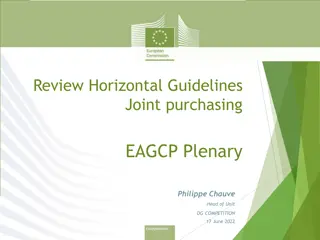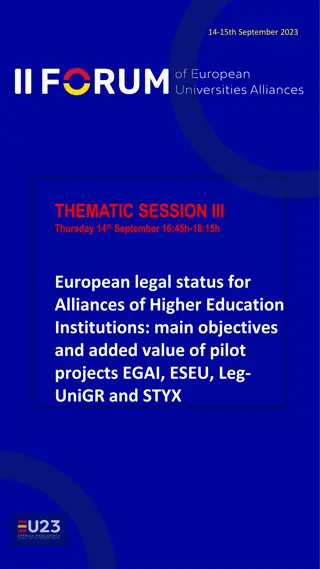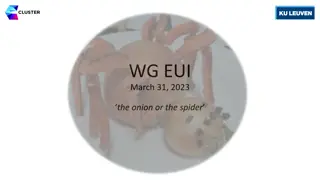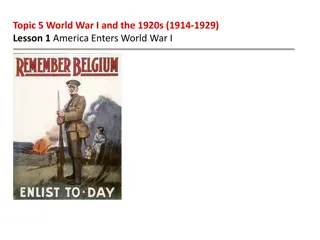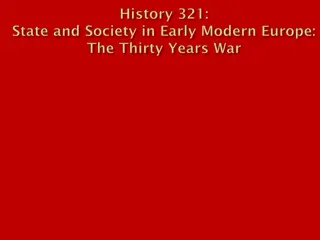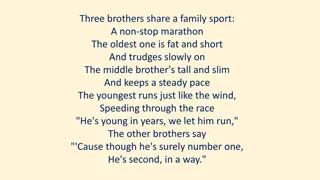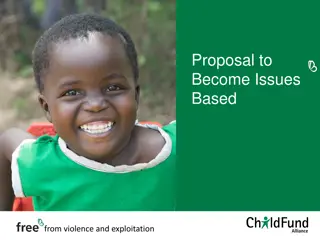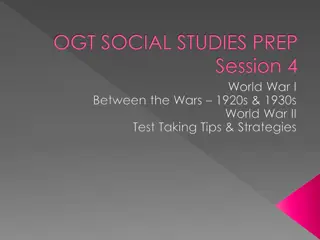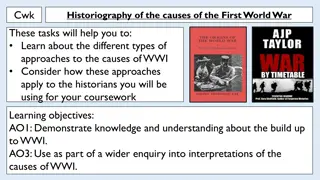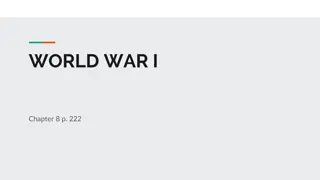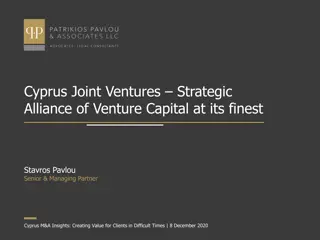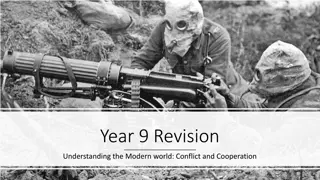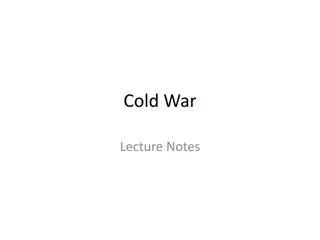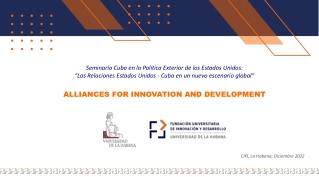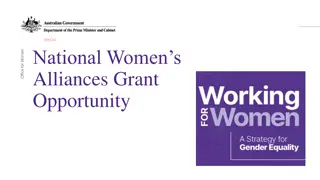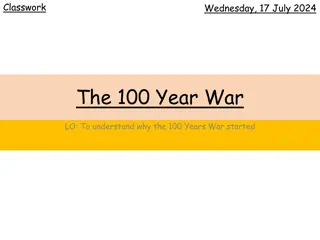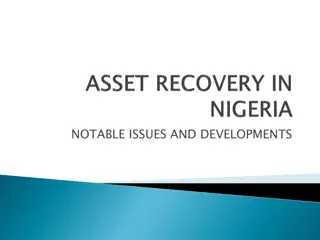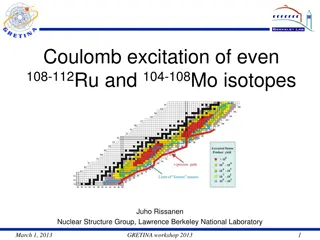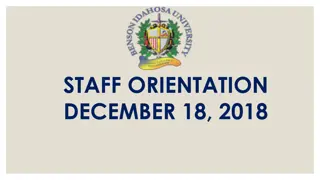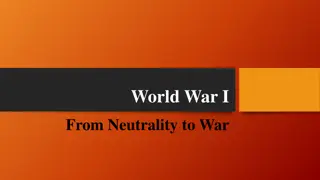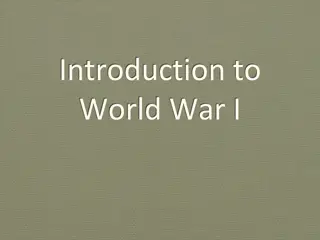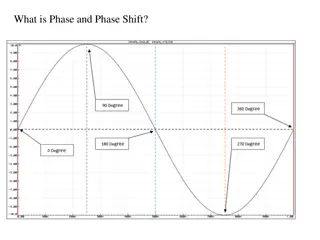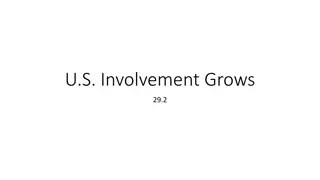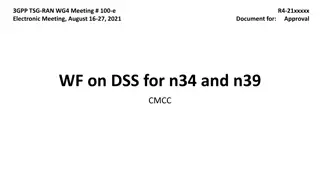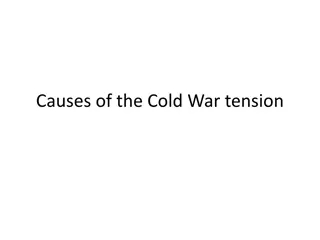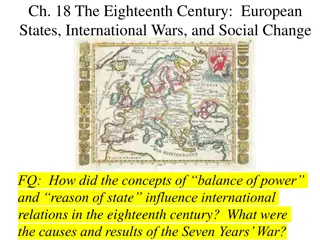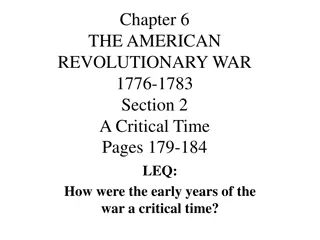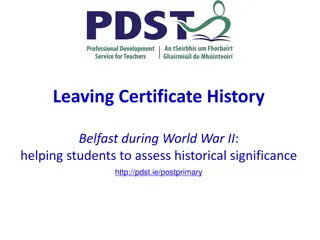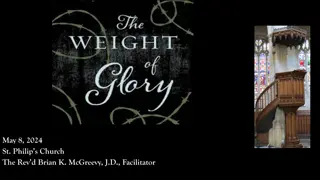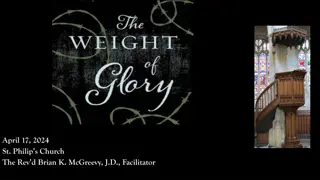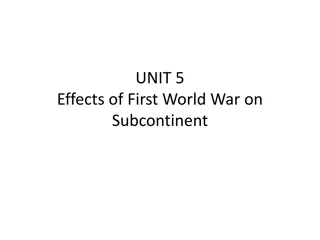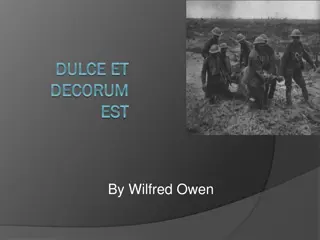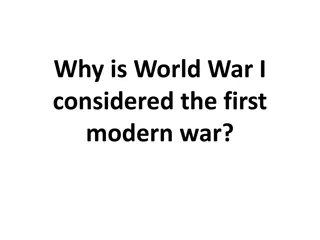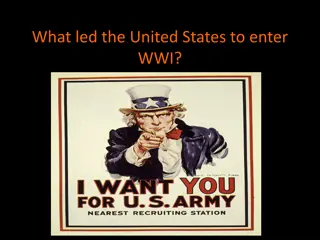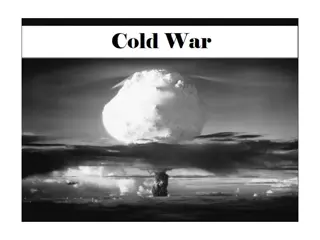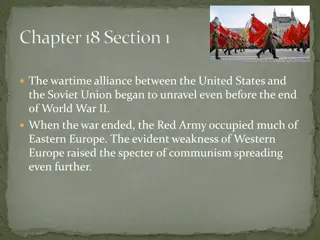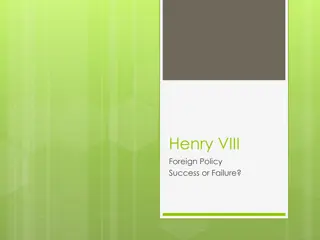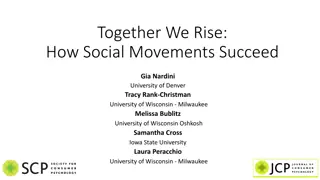Australia's Shift: World War II and the Reorientation of Alliances
During World War II, Australia's relationship with Britain and the United States shifted dramatically due to the changing dynamics of global warfare. The country found itself in a vulnerable position, prompting a strategic reevaluation of alliances. Prime Minister Curtin's declaration marked a pivotal moment as Australia turned to the United States for support, signaling a new era of international relations and military strategy.
Download Presentation

Please find below an Image/Link to download the presentation.
The content on the website is provided AS IS for your information and personal use only. It may not be sold, licensed, or shared on other websites without obtaining consent from the author. Download presentation by click this link. If you encounter any issues during the download, it is possible that the publisher has removed the file from their server.
E N D
Presentation Transcript
Year 10 History Starter Sheets Reading
Menzies had spoken of in 1939. Curtin's statement was not a weakening of the bond with Britain, but it was a turning point in the of many new weapons. As technology advanced in the second half of the 20th century, new methods of warfare were developed, interest on America's part. Australia was the best place from which America could begin a counteroffensive against the Japanese. 1942 that Britain had not sent 'an additional ship, soldier or squadron' to Australia, despite the fact that 'Australia was part of the World War II was a monumental turning point of world history and its consequences are still felt today. The war had changed the Singapore in early 1942 and then attacks on Australia itself, the threat appeared very real, but Britain, in a desperate struggle for Troops were sent to the Middle East, air crews went to fight with the Royal Air Force and half of the Australian navy went to the world and most countries, including Australia. If Australia had been trying to prove itself as a nation in World War I, then World people. Given the danger from Japan and the failure of British power, the government had little choice other than to fall in with terms of human loss World War II was less of an ordeal than World War I. Some 540 000 Australians served in the armed forces ground, backed by attack and support from the air. World War II saw improvements in existing weaponry and the development World War II marked a decisive turning point in Australia's relationship with Britain and the United States. When the war broke Germany. In the dark days of 1942, Australia was vulnerable and alone. The Australian Government had to accept the fact that Britain saw Australia as an expendable part of the empire. Attempts by the Australian Government to secure additional British Australia shall not go , and we shall exert all our energies towards the shaping of a plan, with the United States as its keystone, Without any inhibitions of any kind, I make it quite clear that Australia looks to America, free of any pangs as to our traditional advancing Japanese. The war had compelled Australia to look beyond its traditional link with Britain and the British world that Curtin was simply stating the obvious; that Australia saw the United States as the one power with the strength to oppose the Mediterranean to assist the British war effort. There was always the understanding that if the time ever came when Australia Germans introduced the tactic of blitzkrieg (lightning war), a rapid attack that combined tank units supporting troops on the support for the war against Japan failed, and even General MacArthur noted this when he told Prime Minister Curtin in June Australians in World War II suffered major disruption to daily life as waging war became the common aim of all. However, in For the Americans, the call was unnecessary. The United States did come to Australia's aid in 1942, but the motive was self- British Empire and it was related to Britain and the other Dominions by ties of blood, sentiment and allegiance to the crown'. out in 1939, Australia still saw itself as very much part of the British Empire, and declared its immediate support for Britain. a. __________________________________________________________________________________ __________________________________________________________________________________ _____________________________________________________________________________________ 1. Write down the heading. ______________________________________________________________ dispersal of strength, but we know too that Australia can go and Britain can still hold on. We are therefore determined that When General MacArthur arrived in Australia in 1942, he was welcomed by the Australian Government and the Australian At the close of 1941, after Pearl Harbor but before the final disaster at Singapore and the attacks on Australia itself, Prime Australia felt the need for support in 1942 when Japan began its aggressive advance into South-East Asia. With the fall of links or kinship with the United Kingdom. We know the problems that the United Kingdom faces. We know the dangers of In World . War II and the years immediately following, Australia took a more independent stance in international affairs. During World War II there were rapid advances in technology and strategy that shaped the way the war was fought. The b. ________________________________________________________________________________ survival against Nazi Germany, was unable to come to Australia's aid. For Britain, the first priority was the defeat of Nazi which will give to our country some confidence ofbeing able to hold out until the tide of battle swings against the enemy. Civilians were killed and were affected by the war much more than they had been in World War I. Unlike World War I, War II was a test of that nationhood. For the first time in its history, Australia came under direct threat and attack. including rocket and missile technology, intelligence gained from satellites and computer-guided smart bombs. Menzies, the Opposition Leader until he became Prime Minister again in 1949, criticised the government for 'the utter independence of Australian thought and action - as if no special British relationship existed at all 5. Highlight 5 nouns. Highlight 5 verbs. Highlight 5 adjectives. Highlight 3 adverbs. 4. Write down the words you don t know the meaning of or find difficult to spell. 3. Circle the metalanguage words : ally ,technology, relationship, Singapore Minister Curtin made a powerful appeal, not to Britain but to the United States. John Curtin's New Year message, 1942, Melbourne Herald, 27 December 1941 6. Write down 3 things you have learnt from reading this passage. Year 10 Hist: The Cold War Lesson 1 Reading Activity needed support, Britain would in turn come to Australia's aid. ( Commonwealth Parliamentary Debates, vol. 186, p. 458). the fact that Australia still needed an ally and protector. relationship. Australia was acknowledging two facts: the limits of British power and influence THE CONSEQUENCES OF WORLD WAR II Its significance for modern Australia American military plans and strategy from 1939 to 1945 and 27 000 died. 2. Number the paragraphs. 'Australia looks to America Changing relationships c.
Similarly the foundation of the United Nations is a direct result of World War I I. Imagined. like the League of Nations before it, as concerned principally with the domestic duties of the home. For many women, the war was a liberating experience in which they 5 Explain why the remarks of John Curtin in source 98 are often seen as one of the important consequences of World War Great Britain, France and the Netherlands , was also profound. After the war, they lacked the ability and will to maintain their Soviet Union and a western zone under Britain, the United States and France. Only in 1990, 45 years after the war, was Germany rights , promote public health and assist with economic development The economic and political impact of World War II on the destroyed and both countries faced occupation. In Germany's case, the country was also divided into an eastern zone under the important roles they played. With so many men away, women became heads of the families, working and raising children at the great empires in Asia and Africa. Turning to a future focused on the European Community, these once great powers, while still million people served in the conflict. It is not possible to determine the exact numbers killed, but the usual figure given is 50-60 demonstrated its loyalty to Britain by fighting in Britain's wars. In the future, Australia would again demonstrate its loyalty to its international tension that influenced great power relations until the 1990s. This tension, usually described as the Cold War. At the end of the war, much of this reverted back to the prewar situation, but it laid the foundations for greater changes as the but also as world superpowers. Of the seven great powers of 1939, Germany, Italy and Japan were defeated and in ruins, while the Soviet Union and Japan. In 1945, when the war ended, the United States and the Soviet Union emerged not only victorious was to grow economically and guarantee its future security. A massive immigration program began, initially taking British Before the outbreak of war in 1939, there were seven major world powers - Britain, France, Germany, Italy, the United States, 1949 to 1966. The United States was to assume the role of Australia's great and powerful protector. In the past, Australia had Despite Menzies' concern at the weakening of the British special relationship, there was no turning back. The war marked the background. The war encouraged the belief that this was too small and that the population had to increase if the country beginning of Australia's relationship with the United States: a reality Menzies himself came to accept as Prime Minister from dependence on British culture. For women in particular, their role remained the traditional one of wife and mother and was migrants, then from the late 1940s Europeans, for the White Australia Policy at the time still precluded the entry of non- took on roles formerly the domain of men and earned their own income. For the first time, women were recognised for the an institution to settle international disputes, the United Nations has a broader focus and acts to define and protect human The most obvious consequence of the war was the cost in life, for this was the most destructive war in history. Close to 70 protector, by fighting alongside the United States in wars such as those in Korea and Vietnam and, more recently, Iraq and The use of the atomic bombs on Hiroshima and Nagasaki was also a development of global significance. This new weapon Britain and France were victorious but severely weakened and no longer the great powers they were before the war. The In 1945 Germany and Japan were totally defeated :their great cities were in ruins, their industry and infrastructure were World War II also had an impact on Australian society. Before the war, Australia was a very traditional society with great The breakdown i n the wartime alliance between the Soviet Union and the United States created an environment of million. This includes up to six million killed in the Holocaust. There remained the cost of human misery, and millions of 20th century progressed. In 1945 Australia had a population of only seven million people, mostly of Anglo-Celtic white people. It was the start of the profound change that would see Australia emerge as a multicultural society. having world influence, gradually allowed their colonies independence This process is called decolonisation. ushered in a new era of international relations dominated by the threat of nuclear conflict: the Cold War. Questions (To be answered in your book. Clearly labelled The Cold War Reading Activity 1) 4 Is Australia's dependence on great powers as protectors good, bad or simply inevitable? balance of power had shifted to the two outsiders - the United States and the Soviet Union. 2 Explain how blitzkrieg was a different type of warfare to what had been used before. 6 Why did a Cold War situation develop at the end of World War II? 1 What do you understand by the following terms and phrases? 3 Prepare a list of the major consequences of World War II for: displaced persons including prisoners of war and refugees. The Cold War, the United Nations and decolonisation World War II: Its significance for world history European imperial powers , such as Social change in Australia b the world as a whole. d Postwar immigration c 'Populate or perish' New superpowers b Decolonisation finally reunified . for Australia. Afghanistan. a Cold War a Australia same time.
The defeat of Nazi Germany and Imperial Japan in 1945 by the allies did not bring the period of peace so longed for Non-communists believed in private owner- ship, allowing the free forces of the market to run the economy and giving ________________________________________________________________________________ ________________________________________________________________________________ ________________________________________________________________________________ ________________________________________________________________________________ ________________________________________________________________________________ ________________________________________________________________________________ ________________________________________________________________________________ ________________________________________________________________________________ ________________________________________________________________________________ ________________________________________________________________________________ ________________________________________________________________________________ ________________________________________________________________________________ _____________________________________________________________________________________ _____________________________________________________________________________________ _____________________________________________________________________________________ _____________________________________________________________________________________ _____________________________________________________________________________________ _____________________________________________________________________________________ a. __________________________________________________________________________________ b. __________________________________________________________________________________ c. __________________________________________________________________________________ 1. Write down the heading. ______________________________________________________________ Western capitalist nations believed that the Soviet Union was trying to impose communism all over the world. This led to supported 'proxy wars' around the world (helped smaller nations or groups who were fighting nations or groups Communists believed in state ownership of all enterprises, a centrally controlled economic system that would The Cold War was a contest between the democratic, capitalist nations of the West, led by the United States, and the Eastern communist nations believed that the capitalist West was out to destroy communism. 'took each other on' by threatening armed conflict but always pulling back from the brink 5. Highlight 5 nouns. Highlight 5 verbs. Highlight 5 adjectives. Highlight 3 adverbs. the American policy of containment, which sought to stop any further spread of communism. 4. Write down the words you don t know the meaning of or find difficult to spell. This conflict did not result in open war between the United States and the Soviet Union. by people around the world. After the war, a new conflict arose called the Cold War. The two sides in the Cold War had completely differing views of each other's intentions. As a result, each side became very hostile to and suspicious of the other. 6. Write down 3 things you have learnt from reading this passage. used spies, economic pressure and propaganda against each other provide equally for every- one, and a one-party (communist) state. had a policy of trying to dominate certain parts of the world communist countries of the East, led by the Soviet Union. Year 10 Hist: The Cold war Lesson 2 Reading Activity sympathetic to or receiving aid from the other side). 7. What is the main point of each paragraph? the people a democratic choice of government. 3. Circle the metalanguage words : The background to communism after 1945 steadily built up all types of weapons 2. Number the paragraphs. 8. In summary Instead they: iv. vi. iii. v. ii. i.
10. Who won the Vietnam War? _________________________________________________________________________ When did the Cold War begin and end? ________________________________________________________________ How did the West break the Berlin Blockade? ___________________________________________________________ In what year did China become communist? ____________________________________________________________ Where did it spread to in Europe? ____________________________________________________________________ Where in Europe did Communism begin? ______________________________________________________________ What is NATO? ___________________________________________________________________________________ 1985-86 Summits between United States President Ronald Reagan and Soviet Leader Mikhail Gorbachev suggested a thawing of Who led the Communist forces in China? ______________________________________________________________ What is it s purpose? ______________________________________________________________________________ As communism seemed to be spreading all over the world, there were fears that it might come to Australia by one of two ways: What doctrine was adopted to contain Communism? ____________________________________________________ 1945 The defeat of Nazi Germany and Japan by the Allies led to a breakdown in the alliance between the United States and the Party, or Soviet spies being planted in Australia. As a result, the fear of communism and the cause of anti-communism became 1949 NATO, the American-led North Atlantic Treaty Organisation, was established as the military alliance in Europe against the It could come from outside, perhaps by communist China pushing down through Asia. This idea is illustrated in the cartoon in 1947 The adoption of the Truman Doctrine committed the United States to the containment of communism around the world. After 1945 there was a great fear in the West that communism had become an unstoppable force that might take over all It could come from within, as a result of Communist Party activity in Australia, communists in the trade unions and the Labor In June 1950 communist North Korea attacked non-communist South Korea. This led to the three-year Korean 1948-49 The Berlin Blockade: the Soviets prevented road and rail travel to Berlin. Western powers supplied the city by air. Between 1939 and 1945, Soviet Russia had gained control of Latvia, Estonia and Lithuania, and Bessarabia. 1975 The Vietnam War ended with victory of the communist North Vietnamese. The Soviet Union began to establish communist-led governments in Eastern Europe. The Communists, led by Mao Zedong, came to power in China after a long civil war. By 1948 it had control of all the states of eastern Europe except Yugoslavia. 1989 Communist regimes in Eastern Europe broke down. What is the message of this cartoon? _____________________________________ It had already 'eaten up' Tibet, North Korea and Indochina and was busy eating Malaya. ___________________________________________________________________ ___________________________________________________________________ ___________________________________________________________________ ___________________________________________________________________ ___________________________________________________________________ ___________________________________________________________________ ___________________________________________________________________ ___________________________________________________________________ ___________________________________________________________________ . The Soviet Union controlled East Germany and the eastern half of Berlin. 1979 The Soviet Union invaded Afghanistan. 1962 The Cuban missile crisis. 1955 The Warsaw Pact, the Soviet-led military alliance in Europe, was established. capitalist countries. Communism had made spectacular gains after 1945. Communism is seen as a monster devouring weaker countries. major political issues in Australia from the late 1940s to the mid-1960s tension between the two superpowers. In 1949 China became communist. 1991 The Soviet Union was dissolved. Australia is seen as a future 'course'. Figure5.8. In the cartoon note: TIME LINE OF THE COLD WAR 1950 The Korean War began. The spread of communism Soviet Union. Soviet Union. CARTOON 1. 2. 3. 4. 5. 6. 7. 8. 9.
However, in 1941 Japan swept into South-East Asia. The British were defeated in Malaya, Borneo, Singapore and Burma. The The belief in the domino theory influenced Australia's actions in South-East Asia in the 1950s and 1960s; in particular, the civilisation that happened to be on the rim of Asia, and in 1901 the first law of the new Australian parliament was to create a White Australia Policy to keep Asians out. Before World War II, Australia gained some security from the fact that most of Asia French fell in Indochina, the Dutch in the East Indies, and the Americans lost the Philippines. This was a tremendous blow to China is now the world's second biggest economy, behind the United States. Many believe that China will dominate the 21st Party to victory. Australia viewed communist China as the new threat to Asia. The communists were often called 'Reds', after Cold War in Asia where communism appeared to be on the march . A communist government came to power in North Korea ________________________________________________________________________________ ________________________________________________________________________________ ________________________________________________________________________________ ________________________________________________________________________________ ________________________________________________________________________________ _____________________________________________________________________________________ a. __________________________________________________________________________________ c. __________________________________________________________________________________ 1. Write down the heading. ______________________________________________________________ Many in the United States and among its allies feared that if non-communist South Vietnam fell, communism would spread and Australian support, South Vietnam did fall to the communist North. Communism, however, did not continue its domino- another global financial crisis. More importantly, we think that, by 2013-15, India will start outpacing China' s GDP growth will accelerate to a sustainable 9-10% by 2013-15, after an average of 7 .3% over the past 10 years. In other words, over combat troops, including men who had been conscripted, were sent to Vietnam. In 1975, after the withdrawal of American in 1948. In 1949 China, the largest nation on earth, fell to the communists when Mao Zedong led the Chinese Communist sustainable rate of 8% by 2015, following the remarkable 10% average over the past 30 years. We believe India's growth when France abandoned its claim to the region - communist North Vietnam and non-communist South Vietnam. What had triggering the Korean War, Australia was one of the first nations to send forces to this conflict. This strengthened the bond There was a widely held belief in the 1950s and 1960s, particularly in the United States and Australia, that if communism notably . Morgan Stanley's Chief Economist for China, Qing Wang, believes that China's growth will move towards a more Western power and prestige and made Australia feel very insecure. In the postwar world, Australia faced the reality of the century and perhaps even replace the United States as the world's most powerful nation. India is also experiencing rapid b. ________________________________________________________________________________ was not stopped it would spread throughout the rest of South-East Asia. This belief was called the 'domino theory': if one decision to send Australian troops to the Vietnam War from 1962. To the United States and its allies, including Australia, Vietnam appeared to be a classic example of the domino theory. In 1954, Vietnam had been divided into two countries been a war of independence from France then became a conflict of ideologies and an attempt to unify a divided nation. with the United States, which also committed itself to the Korean War. Prime Minister Robert Menzies called the United to the rest of Asia and even Australia. In the late 1960s, despite increasing opposition to the war within Australia, more We believe that, over the next two years, India should start matching China's GDP growth of around 8.5-9 .5%, barring Until World War II, Australia had virtually ignored the reality of Asia. Australians saw themselves as an outpost of British Australia became a great supporter of the United States. In 1950, when communist North Korea invaded South Korea, the red flag that was the colour of revolution . People spoke of 'Red China' and of the expanding 'red menace'. Asian state fell to communism, then, like falling dominoes, all of Asia would soon fall to communism. growth. Both nations have populations large enough to transform the 21st-century global economy. 5. Highlight 5 nouns. Highlight 5 verbs. Highlight 5 adjectives. Highlight 3 adverbs. 4. Write down the words you don t know the meaning of or find difficult to spell. 6. Write down 3 things you have learnt from reading this passage. Morgan Stanley,lndia and China: New Tigers of Asia, Part lll, 2011, p. 6 the next 10 years, we expect India's growth to outpace China' s. Hist : The Cold War Lesson 3 Reading Activity : The Cold War Lesson 3 Reading Activity was controlled by Britain or by other European powers. 7. What is the main point of each paragraph? States Australia's 'great and powerful friend'. 3. Circle the metalanguage 2. Number the paragraphs. postwar world world The rise of China and India The rise of China and India Australia and the postwar Asia. like spread through Asia. Australia and the Domino theory Domino theory Year 10 Hist Source 3G Source 3G Year 10 iv. iii. v. ii. i.
Nations approved action to liberate Kuwait after it had been invaded by neighbouring Iraq, Australia was one of 30 countries a Identify the person in this cartoon. ________________________________________________________________ ______________________________________________________________________________________________- c Find out what the symbol on the shield is intended to mean. __________________________________________ forces invaded Afghanistan, which had been protecting the al-Qaeda terrorist organisation. Australia and other nations sent ______________________________________________________________________________________________ ______________________________________________________________________________________________ ______________________________________________________________________________________________ b Explain the name of this cartoon. ________________________________________________________________ a What, according to Spender, is the aim of Australia's foreign policy?___________________________________ 1 What was the Cold War? _______________________________________________________________________ c Why should Spender's views appear realistic to people in the 1950s?__________________________________ a Who is the figure in this cartoon intended to represent? _____________________________________________ 2 Define the domino theory.______________________________________________________________________ b Describe how Spender explains the potential danger to Australia. ____________________________________ with the United States and also began to increase its involvement in United Nations operations. In 1990, when the United e What point of view is the cartoonist making by drawing this cartoon? The emotion or feeling the cartoonist is Australia is explored further in chapter 6. Australian governments from 1972 increasingly began to think of Australia as a While Australia began to establish a new relationship with Asia from the 1970s, it nonetheless maintained its close links The end of Australia's involvement in the Vietnam War in 1972 marked the start of a new relationship between Australia forces to fight in the war in Afghanistan. Two years later, in March 2003, when American and British forces invaded Iraq, abolished, and Australia began to accept Asian migrants and political refugees. The impact of this changing policy in to support the action. In October 2001, a month after the attack on the World Trade Center in New York, United States d What region of the world is this cartoon intended to represent? Explain why you came to this conclusion. and Asia. The White Australia Policy, which had discriminated against Asian people since Federation, was gradually linked to enormous trade opportunities of modern Asian economies and a potential market in China. C Australian industry must form links with the growing economies of Asia. B The Australian economy has fallen behind that of some Asian states. vital part of the Asian region, recognising that our nation's future was closely b Which statement best explains the meaning of this cartoon? D Australian industry is very small compared with China. A The Chinese want more trade with Australia. Chronology, terms and concepts Chronology, terms and concepts B fear D uncertainty seeking to create is one of: A anger C isolation Australia also sent troops. 5 Examine source 3H. 6 Examine source 31. 4 Read source 3G. New relationships New relationships
When Vietnam began its modernisation program in the mid-1990s, Australian firms were key players in that process. plans of action. In 1980 the organising committee of Colombo extended the plan indefinitely. An additional way in which Following the devastating attack on the World Trade Centre in New York on 11 September 2001, the United States has include many non-Commonwealth countries, including communist countries. The system under Colombo sets five year under the plan has widened to include things like drug education, HIV awareness, technological assistance and advice Since 2001 the Howard government was extremely willing to support the United States in its so-called War on Terror . Australia has proven itself willing to quickly assist Asian nations in times of crisis. This was seen most clearly at the In October 2001 it invaded Afghanistan to remove the Taliban regime which was providing sanctuary to Osama Bin _____________________________________________________________________________________ Australian troops took part in the allied occupation of Japan. Some of the post-war involvement in the region has been a. __________________________________________________________________________________ c. __________________________________________________________________________________ 1. Write down the heading. ______________________________________________________________ Australia s isolation and clinging to the apron strings of Britain are long gone. Our involvement in, and membership of, investment and economic development amongst its members. APEC does not link its members by means of a formal issues such as security and climate change. In September 2007, the APEC meeting was held in Sydney. The days of economies, develop their education systems and in so doing gradually lift living standards. In more recent years, aid treaty, like SEATO would have done in 1954, but rather, consensus decisions are reached after negotiations. When In the 1990s, Australia was a key player in the development of the peace process in Cambodia. Foreign Minister b. ________________________________________________________________________________ Since 1945, Australia has involved itself increasingly with the Asia-Pacific region. In the aftermath of World War II, Colombo. It was here that Australia strongly supported the idea of providing aid to poorer Asian countries. The aid A major reason for the steady minerals boom in Australia has been the insatiable need of China s economy for member nations meet their talks often go beyond economic matters and they use the opportunity to discuss other The Colombo Plan was originally aimed at only Commonwealth countries. It has widened its scope since 1950 to Australia plays a key security role in a range of countries stretching from East Timor to the Solomons to New APEC stands for Asia-Pacific Economic Cooperation. It started in 1989. APEC contains twenty one nations that In January 1950, the foreign minister of British Commonwealth nations met in the Ceylon (Sri Lanka) capital of Our integration into Asia has even reached the area of sport. Australia s national football (soccer) team, the straddle the Pacific both in Asia and the Americas. Its aim is to promote trade by lowering tariffs, encouraging However, Australia s participation in the region has gone well beyond the purely military in support of an ally. provided went beyond purely humanitarian assistance. The aim was to help these countries to develop their Our ties with the booming economies of north Asia such as China and South Korea continue to grow. Government ministers are now frequent visitors to Asian capitals as are Asian leaders to Canberra. 5. Highlight 5 nouns. Highlight 5 verbs. Highlight 5 adjectives. Highlight 3 adverbs. 4. Write down the words you don t know the meaning of or find difficult to spell. of a military-security nature that was a direct result of the Cold War. This has included: Australia has contributed to the plan is to allow foreign students to study in Australia. time of the December 2004 tsunami which devastated several Asian nations. Australia s involvement in the Vietnam War in support of the United States. Gareth Evans was even nominated for a Nobel Peace Prize for his efforts. 6. Write down 3 things you have learnt from reading this passage. Involvement in the Malayan Emergency with the British in the 1950s. Participation in the Korean War (1950 53) as part of the UN forces. Socceroos, now play as part of the Asian Football Confederation. Year 10 Hist : The Cold War Lesson 4 Reading Activity been engaged in military conflict with Muslim terrorist groups. Laden, who is considered to be behind the 9/11 attacks 75% of Australia s trade is with the countries of APEC. The signing of the ANZUS Pact in 1951. 3. Circle the metalanguage words :. Australia and regional agreements The signing of SEATO in 1954. 2. Number the paragraphs. Australian raw materials. on computer systems. The War on Terror The Colombo Plan Asia is irreversible. Guinea. APEC
In March 2003, US forces invaded Iraq to end the regime of Saddam Hussein. At the time of writing (June 2007), this 5. Where is Australia currently fighting alongside US troops? _________________________________________ APEC (Asia Pacific Economic Cooperation) was established in 1989. Its goal is to advance Asia-Pacific _________________________________________________________________________________________ _________________________________________________________________________________________ _________________________________________________________________________________________ Australia joined the _______________ Treaty signed in 1951 (Australia, New Zealand, United States) in 4. What happened on 11 September 2001? ______________________________________________________ 1. Give three examples of Australian UN peacekeeping since 1945. __________________________________ 3. What is APEC? __________________________________________________________________________ study in _______________ and technical institutes across the country. Assistance was given in the form of 2. What is the aim of the Colombo Plan? ________________________________________________________ Australian troops joined this operation. In May 2007, the Howard government sent 300 more troops to Afghanistan. APEC's agenda has broadened over time to include issues as diverse as counter-_______________, anti- (Signed in1954) The alliance consisted of Australia, _______________, Great Britain, _______________, The treaty was supplemented by a Pacific Charter, affirming the _______________ of Asian and Pacific _______________, Chile, Chinese Taipei, China, Hong Kong China, _______________, Japan, Republic Australia also became involved in another Asia-focussed program, the Colombo Plan also known as the economic dynamism and sense of community. APEC has become the primary _______________ vehicle educational and _______________ aid, training programs, _______________, food supplies, equipment, _______________. After WWII, Australian _______________ policy focussed on the _______________, skills and materials necessary to assume responsibility for their own development. By _______________ Australians remember the Colombo Plan for the thousands of _______________ students who came to corruption, _______________ lregulation, business mobility, _______________ and technology, health Australia had always relied on _______________for protection in the _______________, but when the nations. It was _______________ to aid _______________ Asian countries by providing them with the of Korea, Malaysia, Mexico, New Zealand, _______________ New Guinea, Peru, Philippines, Russia, Pakistan, the Philippines, Thailand, and the United States. SEATO was created to _______________ Australia joined _______________ (South East Asia Treaty Organisation), another defence treaty and _______________ aid; arrangements for _______________ are made directly between member peoples to _______________ and self-determination and setting forth goals of economic, social, and poorer _______________ nations to develop and generate _______________, it was also hoped to _______________ Plan for Cooperative Economic Development in South and Southeast Asia. _______________ War (1950-53), the Malayan Emergency in the later 1950s and 1960s, and the Together, APEC economies represent over one-third of the world's population (2.6 billion people), APEC now has 21 members (referred to as "member economies"): Australia, Brunei Darussalam, We supported the _______________ in their gaining _______________ from the Dutch in 1949 further Communist gains in _______________ Asia. SEATO was ultimately disbanded in 1977. We took an _______________ stance against _______________ uprisings by fighting in the British base at _______________ was captured by the _______________ we turned to the Since its inaugural meeting in Canberra in 1989, APEC has become a key regional forum, conflict shows no sign of ending. Australia had several hundred in Iraq assisting the Americans. The war in Iraq caused great divisions in Australia not seen since the days of the Vietnam War. _______________ economic growth, trade and investment in the Asia-Pacific region. _______________ 60 per cent of global GDP and almost 50 per cent of world trade. which the three nations agreed to help each other in matters of common defence and one of its main aims was to stop the spread of _______________ for promoting open trade and practical economic cooperation. Singapore, _______________, United States and Viet Nam. _______________ the appeal and spread of communism cultural _______________between the member countries _______________ War during the 1960s and early 1970s Some of the main aspects of our foreign policy were: Australian naval forces also patrol the Persian Gulf. Australia s foreign policy and the _______________ Questions
________________________________________________________________________________________________________________________________________________________________ ________________________________________________________________________________ ________________________________________________________________________________ ________________________________________________________________________________ ________________________________________________________________________________ ________________________________________________________________________________ ________________________________________________________________________________ ________________________________________________________________________________ ________________________________________________________________________________ ________________________________________________________________________________ ________________________________________________________________________________ _____________________________________________________________________________________ a. __________________________________________________________________________________ c. __________________________________________________________________________________ 1. Write down the heading. ______________________________________________________________ It made much of its opposition to communism. Menzies frequently tried to link the Labor Party with communism. b. ________________________________________________________________________________ perceived to be 'the communist threat to Australia'. He pursued his line of anti- communism from the time of his The Communist Party was influential in several unions and the late 1940s saw many major strikes. The Menzies would remain prime minister for the next seventeen years. He was a firm believer in fighting what he Menzies attempted to introduce a law into parliament that would ban the Communist Party. This was The Chifley Labor government (1945-49) had a proud record of reform and post-war re- construction: In 1947 it had tried to nationalise the banks (have the government take ownership of them). People were weary of the wartime restrictions that were still in place, such as petrol rationing. In 1949, the Liberal Party of Robert Menzies ended eight years of Labor Party rule in Australia. Social reforms such as increases in child endowment and pensions had been introduced. 5. Highlight 5 nouns. Highlight 5 verbs. Highlight 5 adjectives. Highlight 3 adverbs. The December 1949 election was easily won by the Liberal Party-Country Party coalition. 4. Write down the words you don t know the meaning of or find difficult to spell. In 1944, Robert Menzies created a new conservative party, the Liberal Party. Menzies' new party supported private enterprise and traditional values. 6. Write down 3 things you have learnt from reading this passage. This became known to Menzies' enemies as 'kicking the communist can'. The response of Australian governments to the threat of communism Anyone who was a communist could be banned from certain jobs. Labor Party was being accused of being too soft on the communists. Great projects like the Snowy Mountains scheme had started. Year 10 Hist: The Cold war Lesson 5 Reading Activity Menzies promised to end the wartime rationing restrictions. However, Chifley's government was becoming unpopular: The Australian National University had been set up. election victory in 1949 right through to the mid-1960s. Once accused, a person had to prove their innocence. Attempt to outlaw the Communist Party, 1950-51 the Communist Party Dissolution Bill of April 1950. 7. What is the main point of each paragraph? There had been large-scale immigration. 3. Circle the metalanguage words : To many this looked like communism. The party was to be outlawed. 2. Number the paragraphs. The election of 1949 viii. vii. vi. xi. iv. ix. iii. v. x. ii. i.
Many people saw this bill as undemocratic, even if they had no sympathy for communism. They challenged the bill in Photographs of the distraught Mrs Petrov were sent around the world and provided wonderful propaganda for the By March 1957, some Labor Party supporters had broken away from the party to form a new party: the Democratic The Petrov Affair started with the defection (the decision by a person to change their allegiance from one country to The affair took a dramatic turn in late April when Petrov's wife, Evdokia, was dragged onto a plane at Sydney airport Arguing the case against the Billon behalf of the Waterside Workers Movement was H. V. Evatt, the deputy leader Menzies also announced that a Royal Commission, headed by three judges, would investigate Petrov's claims that The country' was very evenly divided on the issue. Opponents said the banning of the party was a denial of basic The main result of the Petrov Affair and the subsequent Royal Commission was that the Australian Labor Party split. The DLP had much support from anti-Communist, Catholic Labor people, some of whom belonged to the National Labor leader Evatt accused Menzies of using the Petrov Affair to hurt the Labor Party in the election; he was It was discovered Mrs Petrov's guards were carrying guns. When the plane stopped at Darwin for refuelling, the Menzies responded to this by calling a referendum on the issue. If the referendum passed, the High Court ruling another) of Vladimir Petrov, the Third Secretary of the Soviet Embassy in Canberra, on 3 April 1954. Petrov was One of the great ironies of Menzies' strong anticommunism came in 1961. His party won the election extremely The support the DLP gave to the Liberals was one of the main reasons Labor was kept out of power until 1972. Supporters of the ban included the Liberal Party, most of the media and the Catholic Church, including Daniel the High Court and it was declared 'unconstitutional' (it could not be passed because it went against the Evatt had defended members of his staff who had been accused of having links with Soviet officials. Evatt's erratic behaviour and defence of people accused of communist sympathies hurt his reputation. On 13 April, Menzies announced Petrov's defection in parliament, just before it closed for the election. Supporters of the ban said it was necessary because of the worldwide threat of communism. The DLP took support away from the ALP and gave its preferences to Menzies' Liberal Party. In the late 1960s it held the balance of power in the Senate and backed the Liberals. Civic Council, a Roman Catholic group within the Victorian trade union movement. The referendum was held on 22 September 1951. It was very narrowly rejected: Evatt believed in free speech but he was accused of supporting communism. The commission concluded that there was no Soviet spy ring in Australia. The media portrayed the Labor Party as having links to communists. The Labor Party' narrowly lost the May election by seven seats. Menzies seized on this event to further 'kick the communist can'. Mannix who had so strongly opposed conscription back in 1916. Polls before the Petrov Affair were predicting a Labor victory. by tough-looking Soviet officials to be flown back to Moscow. narrowly - thanks to preferences from the Communist Party! Thousands gathered at the airport to protest against this. The Royal Commission reported in August 1955. there was a Soviet spy ring operating in Australia. guards were arrested and Mrs Petrov was freed. deserting the Soviet Union for Australia. She was allowed to stay in Australia. An election was due in May 1954. 2 370009 votes against. The Petrov Affair, 1954 democratic freedoms. 2317927 votes for could be overruled. of the Labor Party. Labor Party (DLP). capitalist West. probably right. constitution).



